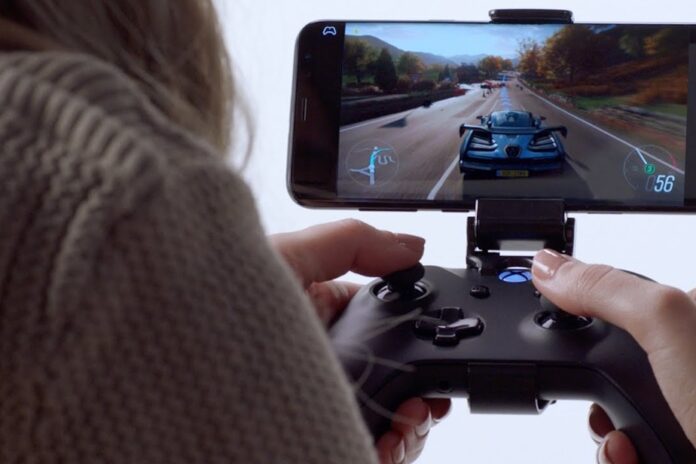Google has broken its teeth with cloud gaming, Amazon is struggling to make its Luna platform work, while Nvidia, Microsoft and Sony are quietly attracting followers without making headlines. False good idea or innovation awaiting its moment of glory, cloud gaming? Point.
Presented a few years ago as the way to salvation for video games, the one that was going to allow access to all games without a powerful computer or console, cloud computing is clearly having difficulty in attracting players, often burned by poor experiences.
As early as 2017, two years before the launch of Stadia with great fanfare and Google’s promises, Nicolas Hubert was introduced to cloud computing with Snoost Cloud Gaming. The postdoctoral researcher at the Raoul-Dandurand Chair at the University of Quebec in Montreal (UQAM) was the typical client of what is called cloud gaming, or “cloud gaming”, referred to in English as “cloud gaming” . A low-powered computer and an internet connection to a server are sufficient in theory to play any computer-intensive video game.
“I used Snoost for Star Citizen,” he explains. It worked more or less well, there were long delays and I gave up. The Snoost service died that year.
Mr. Hubert then subscribed to what is now the largest cloud gaming platform, GeForce Now, from graphics card maker Nvidia. “At first it was beta, it was ok, there was lag, but it was still fun to play. The catalog corresponded to my expectations, I like Assassin’s Creed, they had FIFA, Tekken. »
But then, in 2020, GeForce Now made its official launch, raised prices and retired many games, including the favorites of the UQAM researcher. “I no longer had any interest, even though the latency had decreased and the experience had improved. I bought a Razer Blade gaming laptop. »
Technically, our experiences with GeForce Now, Game Pass and PS Plus, the three main platforms, have been generally satisfactory, despite a few hiccups.
The newcomer to Canada since last March, Luna from Amazon, offers a hundred games for a base price of $12.99. Our trial here was significantly less interesting, with at least one out of two games being problematic. Amazon also warns gamers on its site that “streaming quality may be affected outside of the United States.”
Stadia, in a review published in La Presse in 2020, gave us the same worries. Google shut down this service last January.
That said, even for successful platforms, the consensus is that the quality never reaches that of games on a computer or console. “Despite recent major technological advances, streaming cannot compete with downloaded games,” says the renowned Kotaku site. Even minor latency cannot be ignored. »
The most committed players, very often, will do like Nicolas Hubert and return to a console or a PC for video games.
However, there are arguments in favor of cloud computing, said Christopher Chancey, CEO of independent studio ManaVoid and a well-known figure in Quebec video games.
He recognizes that in North America and Europe, players generally have the means to equip themselves adequately to satisfy their passion. This is not the case everywhere, he recalls. “That’s my entrepreneur hat talking, but I’m thinking of places on the planet where there aren’t that many computers, Africa, India, even China where it’s very mobile. That is the other use case, to give players in these countries the opportunity to access the latest games. That’s interesting. »
It is estimated that PS Plus Premium, which allows streaming, had some 8 million subscribers last March. It is impossible to know which portion of the 25 million Xbox Game Pass subscribers uses the Cloud Gaming service, which is still presented as being in beta. GeForce Now’s 25 million registrants are bound to be cloud gaming enthusiasts. By any calculation, it’s clear that cloud gaming isn’t yet a big popular hit, notes Chancey.
“I don’t think cloud gaming has had its ChatGPT moment. Neither Game Pass nor GeForce Now has captured the imagination of the opportunities that cloud gaming can bring. This spark, we have not seen it yet. »
Nvidia’s cloud platform has 25 million subscribers and 1,643 games. The games, which must be owned with the exception of a hundred free works, can be streamed on all platforms, from cell phones to some smart TVs. The free tier only allows one-hour sessions per day and puts the player in a queue that can vary from a few minutes to half an hour. The Ultimate plan, at $24.99 per month, allows eight-hour sessions at maximum resolutions.
Microsoft’s latest stats for its Xbox Game Pass subscription service are from January 2022, when there were 25 million subscribers paying at least $12.99 per month. These players have access to a library of some 100 games, which changes every month, which they can download. With the Ultimate version, at $18.99, most of these games can be streamed directly to the cloud with Xbox Cloud Gaming, still in beta since September 2020.
PlayStation offers three subscription plans, the most expensive of which, PS Plus Premium, provides $21.99 per month access to cloud games. The bulk of the offering consists of some 700 games from previous generation consoles, all the way back to the PS2. In mid-June, we also learned that Sony was preparing to offer more recent games on its PS5.















